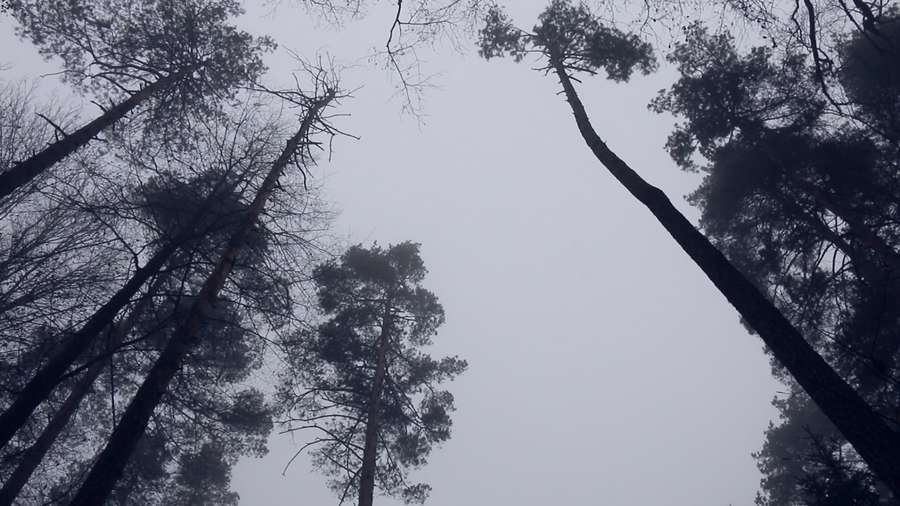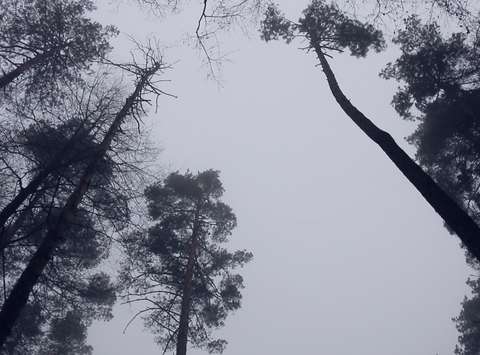Videofestival Natures 17
Traditional video festival at the Bežigrad Gallery 2 and the seventeenth festival of video will present authors who have been selected through a competition: Domen Dimovski, Lana Grošelj, Timea Jelenovec, Ronja Jakomini, Aleksij Kobal, Klavdija Košir, Andreja Kranjec, Boštjan Lapajne, Davorin Marc, Andreja Muha, Martina Obid Mlakar, Boštjan Perovšek, Ula Pogorevčnik in Tina Zadnik.
PLAYLIST ORDER
1. Boštjan Perovšek, January Whistles at Us, 2019, 2.57 min
2. Domen Dimovski, The Touch of Trees, 2020, 4.20 min
3. Boštjan Lapajne, Dancing Cactus/Purple Cactus, 2016, 2.11 min
4. Ula Pogorevčnik, Natus, 2019, 3.27 min
5. Andreja Muha, Bindles and Salt, 2020, 4.05 min
6. Klavdija Košir, He, 2019, 2.18 min
7. Ronja Jakomini, Memories, 2019, 1.33 min
8. Timea Jelenovec, Way to Cope, 2019, 1.22 min
9. Lana Grošelj, Exhale, 2019, 1.42 min
10. Aleksij Kobal, Line Marking, 2019, 5.56 min
11. Andreja Kranjec, Phoenix, 2019, 6.50 min
12. Martina Obid Mlakar, Tina Zadnik, White Mistletoe, 2019, 0.12 min
13. Davorin Marc, Let’s Go to the Station, 2019, 3.42 min
"The video works presented at the Festival Natures are based on images of nature,
or else include images of nature in some of their sequences, or are derived from things found in nature.
The Video Festival Natures is marked by people and their natures."
Miloš Bašin
To the Natures
The video works presented at the Festival Natures are based on images of nature, or else include images of nature in some of their sequences, or are derived from things found in nature. Also in the nature of human existence and living, in the relations between past and present events, and the responses to them. The Video Festival Natures is marked by people and their natures.
The threeth annual Videofestival Natures in Bežigrad Gallery 2 this year features over two hundred videos from twenty-eight countries and ranging from one minute to full-length. To be selected, videos must be created up to a few years before each festival. Artists from all over the world are invited to enter the competition.
Nature Video Festival 17
The Nature Video Festival has been developed from thoughts on how to present new media to visitors of Bežigrad galleries in an original way. And, though under special circumstances, despite all odds, the festival will be taking place this year as well. As in all previous years, this time, all featured videos come in one way or another from images in nature, which also serves as the creators’ main guideline. Of course, a guideline such as nature topics is set very broadly and thus opens up the possibility of infinite interpretations.
Sometimes just a random image, perhaps even just a sound, may affect us like some kind of echo that takes us back to a certain moment in the past. We’re probably all familiar with this feeling of transcendence, when we suddenly find ourselves in a certain place in our minds, which calms or excites us in a particular way. Spontaneously captured sequences during a walk in the woods, presented to us by the video The Touch of Trees (Dotik dreves), may not represent something to which viewers would pay more attention than usual; and it’s here that the author relives his childhood when the environment brings back memories of an old oak tree that was once of special importance to him. It’s, therefore, a personal experience, an internalized personal moment, which the author Domen Dimovski is sharing with us.
The human interior, and its intertwining with the environment, is a common point of the video The Touch of Trees (Dotik dreves) and the video Phoenix (Feniks), by Andreja Kranjec. However, while Dimovski is looking back and reliving the past by recalling his memories, Kranjec is looking towards the future. As the work’s very title suggests, it presents us with the idea of rebirth, of leaving the past behind, which keeps us in further development, of a new beginning. As the author herself wrote, the film explores the power of transformation, constant change and the search for beauty and poetics. The work combines elements of video, poetry and dance.
Dance is also used as an important means of communication in the video Natus by Ula Pogorevčnik. Here, we observe two beings who have discarded all the ballast oppressing them and who now must or can only express themselves with their body. Freed from all superfluous baggage, they find themselves in a different world, in which they need to re-establish themselves and which needs to be rediscovered.
The video, of course, primarily communicates through images. An important element that can enhance what is seen or add extra dimension is sound. The authors are well aware of this; so, by carefully choosing the soundtrack, they can very well manipulate the atmosphere they want to present in the video and convey it to the viewer. Thus, video sound presents an additional field of research. Moreover, we can even go a step further, setting sound as the primary carrier of an idea, to which the images are adapted. An example of such a video construction is January Whistles at Us (Januar nam žvižga) by Boštjan Perovšek. This time, the almost completely static image, which already seems quite abstract, doesn’t give us very much information. The idea is presented in an extremely simple way, almost entirely by means of a sound clip captured on a windy day in January; however, despite its elementary construction, the video achieves an excellent effect.
Animation also finds its place inside the world of video. Here, static images or characters, with the help of a long process of recording individual phases of movement, which are later assembled into a whole, turn into moving figures. The animated videos presented at this year's Nature Video Festival are essentially completely different. The video White Mistletoe (Bela omela) by Martina Obid Mlakar and Tina Zadnik is a short stop-motion animation that mainly convinces with its ease, while the video Line Marking (Markacijska Linja) by Aleksij Kobal, which is about computer animation, presents itself with all of its monumentality, in terms of both image and sound.
As stated in the beginning, the set guideline is open to interpretation. And it’s precisely the process of discovering and getting to know all these different forms, which are somehow connected into a larger whole, that is extremely exciting and inspiring every year.
Dejan Jevšnik
Colophon
Production: Bežigrajska galerija 2 / MGML
Exhibition curators: Miloš Bašin, Dejan Jevšnik
Artists: : Domen Dimovski, Lana Grošelj, Timea Jelenovec, Ronja Jakomini, Aleksij Kobal, Klavdija Košir, Andreja Kranjec, Boštjan Lapajne, Davorin Marc, Andreja Muha, Martina Obid Mlakar, Boštjan Perovšek, Ula Pogorevčnik in Tina Zadnik.
Design: Miloš Bašin
Photodocumentation: Artists archiv
Realisation of the exhibition: Miloš Bašin, Mare Cotič, Dejan Jevšnik
The exhibition was made by: City of Ljubljana
Location
Vodovodna 3
1000 Ljubljana
T +386 1 43 64 057
F +386 1 43 66 958
E bezigrajska.galerija1.2@gmail.com
Opening hours
Tuesday to Friday: 10:00–18:00
Saturday: 10:00–14:00
Sundays, Mondays: Closed
24 and 31 December: 10:00–14:00
1 January, 1 November, 25 December: Closed
Tickets
Free entry.

